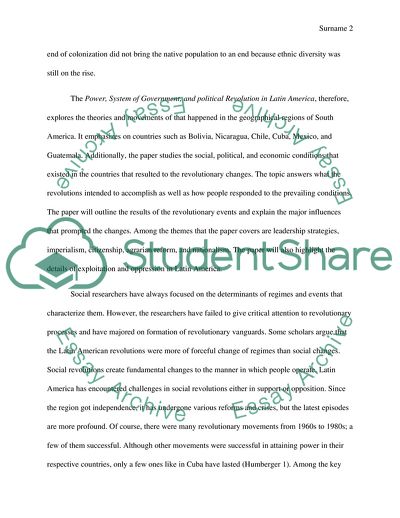Cite this document
(Power, System of Government, and Political Revolution in Latin America Case Study Example | Topics and Well Written Essays - 3000 words, n.d.)
Power, System of Government, and Political Revolution in Latin America Case Study Example | Topics and Well Written Essays - 3000 words. https://studentshare.org/history/1840071-latin-american-revolution-in-film
Power, System of Government, and Political Revolution in Latin America Case Study Example | Topics and Well Written Essays - 3000 words. https://studentshare.org/history/1840071-latin-american-revolution-in-film
(Power, System of Government, and Political Revolution in Latin America Case Study Example | Topics and Well Written Essays - 3000 Words)
Power, System of Government, and Political Revolution in Latin America Case Study Example | Topics and Well Written Essays - 3000 Words. https://studentshare.org/history/1840071-latin-american-revolution-in-film.
Power, System of Government, and Political Revolution in Latin America Case Study Example | Topics and Well Written Essays - 3000 Words. https://studentshare.org/history/1840071-latin-american-revolution-in-film.
“Power, System of Government, and Political Revolution in Latin America Case Study Example | Topics and Well Written Essays - 3000 Words”. https://studentshare.org/history/1840071-latin-american-revolution-in-film.


